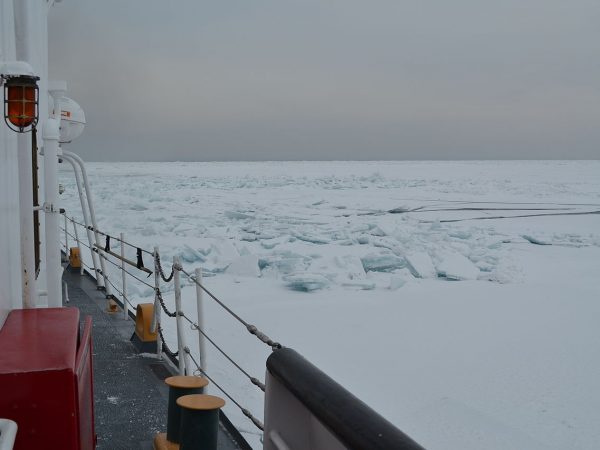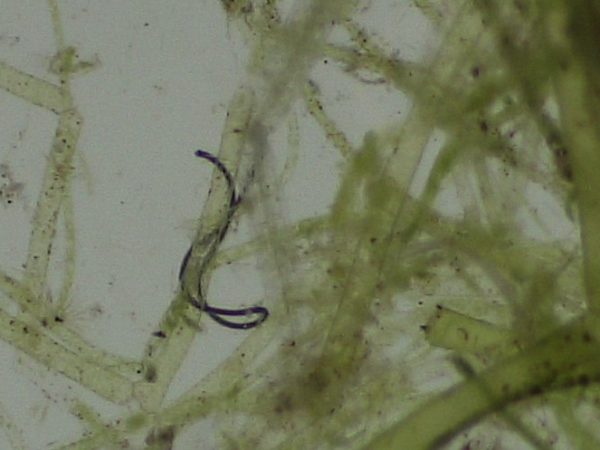
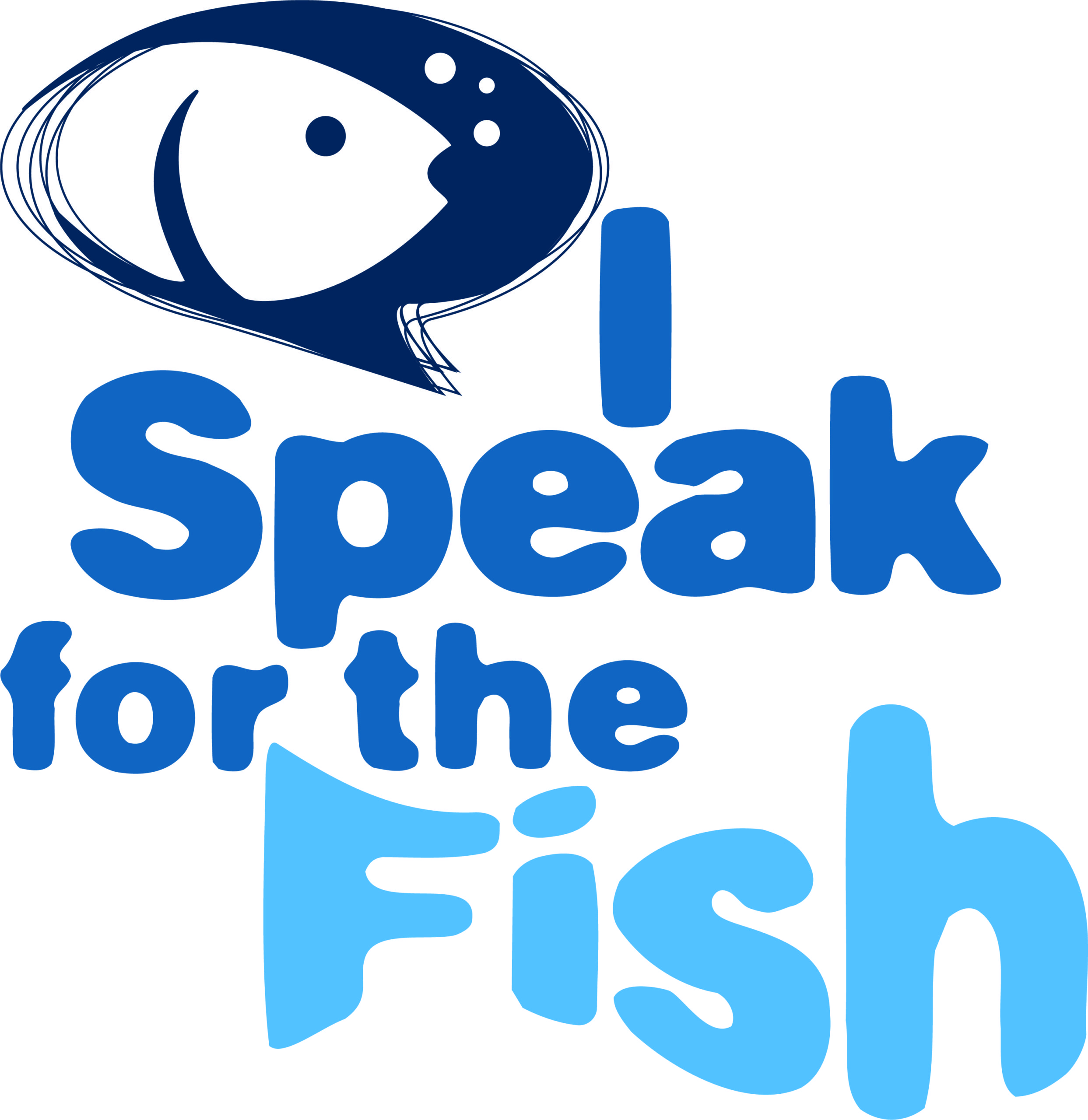 I Speak for the Fish is a monthly column written by Great Lakes Now Contributor Kathy Johnson, coming out the third Monday of each month. Publishing the author’s views and assertions does not represent endorsement by Great Lakes Now or Detroit Public Television. Check out her previous columns.
I Speak for the Fish is a monthly column written by Great Lakes Now Contributor Kathy Johnson, coming out the third Monday of each month. Publishing the author’s views and assertions does not represent endorsement by Great Lakes Now or Detroit Public Television. Check out her previous columns.
A male lake sturgeon was tagged under the Blue Water Bridge, in the early 1990s. As a member of the largest spawning population of sturgeon in the Great Lakes, he would only be in the area for a few weeks and researchers wanted to know where he would go when the spawn was over.
At this time, Canada’s Ontario Ministry of Natural Resources did a population assessment on the lake sturgeon that spawned near the Blue Water Bridge. The study estimated 26,689 adult lake sturgeon spawned on the site.
However, that does not mean there are nearly 30,000 sturgeon on site each year.
Lake sturgeon only spawn once every 3-4 years on average. Some males will spawn more often and some females may wait longer. If we use 3 years as an average, then roughly 10,000 lake sturgeon spawn on the Blue Water site each year.
Of those 10,000 spawning adults, maybe a thousand are residents, meaning they live in the area year-round. This means that as many as 9,000 sturgeon travel from other parts of the Great Lakes to reach the Blue Water site each year.
To find out just how far these sturgeon travel, researchers with the U.S. Fish and Wildlife Service caught a male lake sturgeon in lower Lake Huron just upstream of the spawning site and surgically implanted an acoustic telemetry tag.
The acoustic tag allows the researchers to track the fish’s movements.
Was he a resident? Or would he leave the area? And if he left, would he go north into Lake Huron or south to Lake St. Clair, or even Lake Erie?
The newly deployed Great Lakes Acoustic Telemetry Observing System (GLATOS) would enable researchers to answer these questions. And the answer they got surprised everyone.
How acoustic telemetry works
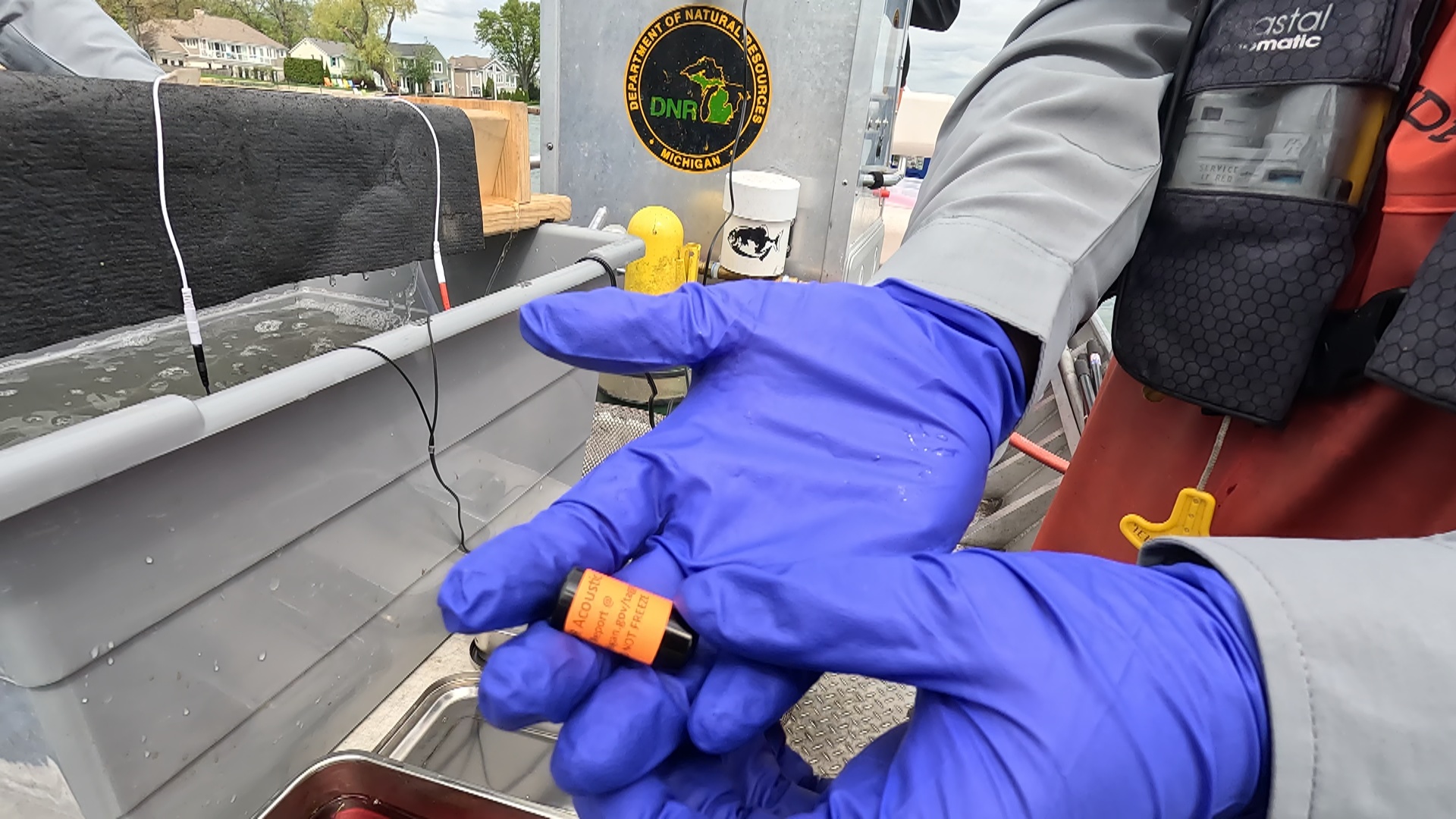
Acoustic telemetry tags are surgically implanted in fish to track their movements in the Great Lakes. (Photo courtesy of Kathy Johnson)
When I first heard about the fish tracking system in the Great Lakes, I was a bit confused about how it worked.
I’d heard that buoys were being deployed across the basin to track fish movements and I pictured a bunch of units that floated on the surface and somehow tracked the fish below. It’s actually the opposite.
Telemetry receivers are typically attached to an anchor on the bottom. A small float is attached to the top of the receiver with just enough buoyancy to keep the device upright and off the bottom.
The receivers are actively listening for fish 24/7. When a tagged fish swims past, the receiver records the fish’s identification number. With over two thousand receivers currently deployed and listening, there are fewer and fewer places a tagged fish can travel without being recorded.
All the fish passages are digitally stored inside the receivers. To access the data, researchers have to physically retrieve the units.
Usually once each year, all 2,000 receivers will be retrieved by hundreds of researchers across the basin. Everyone sends the data to GLATOS which serves as the central data hub.
When all the receiver data is available, researchers can submit a list of tag numbers and GLATOS will provide a list of every location where those tags were recorded.
Some tags talk. Some don’t.
The tags more commonly used in fisheries research are passive integrated transponders or PIT tags. These tags are smaller than a grain of wild rice and they are inserted right under the fish’s skin with a small handheld device.
When researchers are working quickly, the PIT tags are often inserted faster than my camera can autofocus.
PIT tags are ‘passive’ because they do not emit any signals. If a PIT-tagged fish is caught, the tag can be read with a portable scanner similar to the ones at the grocery store self-checkout.
There are hundreds of thousands of fish in the Great Lakes carrying PIT tags and none of those tags are being tracked by the telemetry receivers.
Telemetry tags work differently.
Acoustic telemetry tags emit an audible signal, essentially shouting out their ID numbers 24/7. So anytime a fish with an acoustic tag swims by a receiver, the tag number, date, and time are recorded.
Acoustic tags range in size from about an inch to three inches. They are cylindrical and the larger ones resemble a shotgun shell or a lipstick case depending on your point of reference.
Implanting telemetry tags requires a surgical procedure complete with sterile instruments and anesthesia. Researchers make a small incision in the fish’s belly, insert the tag, and stitch the cut closed.
The wound heals within a few weeks as evidenced by fish that have been recaptured several weeks after receiving their tags and their bellies are all healed up.
One of the challenges for researchers is determining how often the tags shout out their numbers. The tags have a limited battery life and an acoustic tag small enough for a sunfish to carry has a very limited amount of juice.
If the tag shouts out the number too often it will drain the battery and reduce the amount of tracking data obtained. If the tag doesn’t shout out its number often enough the fish might swim past a receiver without getting recorded. This tends to make the data jumpy which isn’t ideal.
In large fish like sturgeon and muskie, the tag can transmit for several years which has enabled researchers to get a much better picture of how these fish are using the entire Great Lakes.
A muskie known as 007

A muskie with the tag number 007 appears to have the same quest for adventure as its more famous namesake. (Photo courtesy of Kathy Johnson)
I could not have written a better acoustic telemetry tale than the real-life 007. It’s screenplay perfection that the muskie with tag number 007 likes to travel and break the rules.
Historically, muskie were thought to remain within a relatively small territory.
The Michigan Department of Natural Resources expected the muskie tagged in Lake St. Clair to basically stay in Lake St. Clair. The purpose of tagging the fish was to try and learn which parts of the lake they were utilizing at different times of the year.
But 007 didn’t do what most muskies do.
After being tagged, 007 headed south. He went down the Detroit River to Lake Erie and then swam across the lake to Buffalo, New York! The journey took him about two months. He stayed there for 3 to 4 months.
His return took half the time. He went from the eastern end of Lake Erie back to Lake St. Clair in about a month. He stayed in Lake St. Clair for the next year and then repeated his trip to New York and back the following year.
When the DNR requested the tracking data for tag 007, they did not anticipate the tag had been recorded by receivers from Detroit to Buffalo and back.
Tracking sturgeon travels
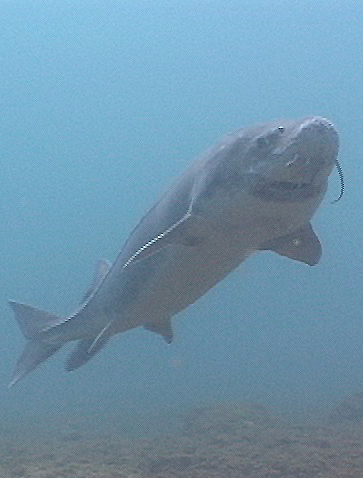
An adult lake sturgeon heads out into Lake Huron after spawning under the Blue Water Bridges. (Photo courtesy of Kathy Johnson)
The lake sturgeon tagged under the Blue Water Bridge went even farther.
After being tagged and released the sturgeon headed north out into Lake Huron. This was not surprising. What was surprising was that he didn’t stop. He swam the entire length of Lake Huron, passed through the Strait at Mackinaw, crossed the top of Lake Michigan, and cruised into Green Bay.
He spent two years in the big Wisconsin bay.
The third year, he headed back across Lake Michigan, through the strait, and into Lake Huron. This put him on track for the spawn-every-three-year average. But he didn’t go to the Blue Water spawn site.
Instead, he took a sharp right turn into Saginaw Bay. And he stayed there for another year.
Four years after he was tagged, he would return to the Blue Water site to spawn.
These epic long-distance journeys are a great reminder that the Great Lakes are one gigantic system. While we may separate them by federal, provincial, state, and local lines: the fish don’t.
For more about how acoustic telemetry is being used in large urban cities like Chicago, keep your eyes out for another companion article, and the latest Great Lakes Now episode about tracking fish—airing on Monday, September 30.
Catch more news at Great Lakes Now:
I Speak for the Fish: Hand-feeding a rainbow trout is fun, but is it ethical?
I Speak for the Fish: The Quest for a Largemouth
Featured image: The largest population of lake sturgeon in the Great Lakes gathers under the Blue Water Bridges each spring to spawn.


